Punta Colonet, Baja California
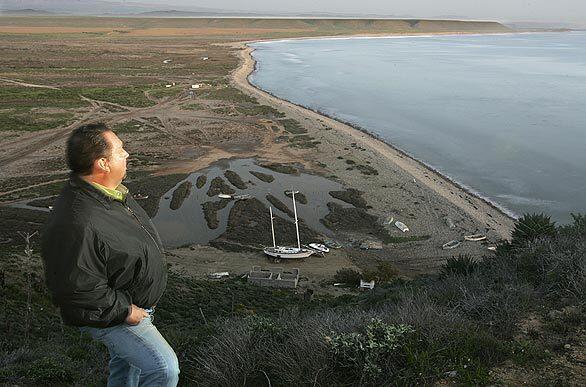
Jesus Lara gazes over the valley and bay at Punta Colonet, Mexico, that may be developed into one of the Pacific Coast’s largest seaports. Mexico’s government is preparing to open bidding on what would be the largest infrastructure project in the nation’s history, a $4-billion seaport that could transform this poor village south of Tijuana into a cargo hub to rival the ports of Los Angeles and Long Beach. Although some oppose the development, Lara, who represents land owners from the agricultural and ranching pueblo, says that for older residents, “This port may be the last opportunity any of them gets. You can’t eat the view.” (Don Bartletti / Los Angeles Times)
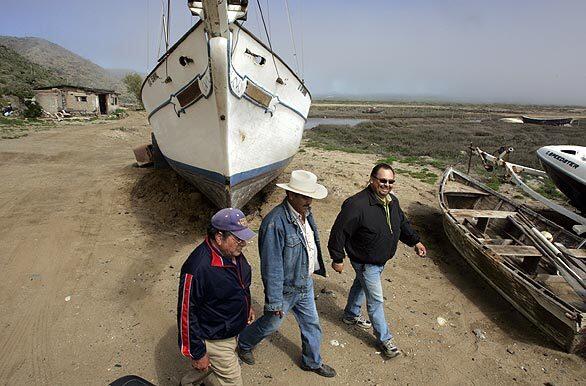
Local landowners Jose Corona, from left, Martin Perez Mendoza and Jesus Lara walk through a sleepy fish camp that may become a giant seaport in Punta Colonet, Mexico. With the West CoastÂ’s largest port complex, L.A.-Long Beach, constrained by urban development and environmental regulations, shippers are searching for alternatives. (Don Bartletti / Los Angeles Times)
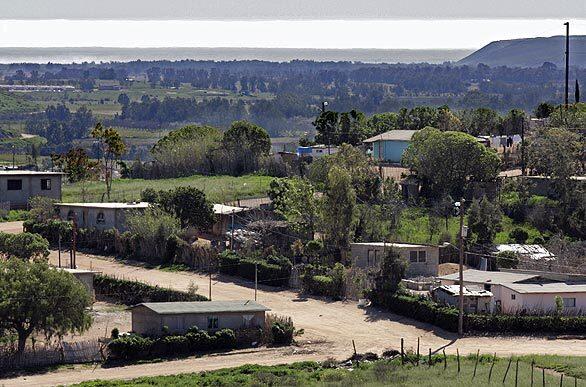
A hilltop neighborhood in Punta Colonet provides a clear view through a broad valley to the Pacific Ocean five miles in the distance. Plans for a new seaport would dramatically alter the valley, and the economy of the little town about 140 miles south of Tijuana. (Don Bartletti / Los Angeles Times)

Omar Vega and his son Jorge Luis Cota, 15, peddle fruit from their battered pickup truck. Many Punta Colonet residents feel a seaport would enhance employment prospects. Several are hoping to get rich selling land to the portÂ’s developers or to other businesses that would sprout to support the project. At a minimum, theyÂ’d like to see the streets paved and their kids have a shot at landing jobs beyond the produce packing houses. (Don Bartletti / Los Angeles Times)
Advertisement
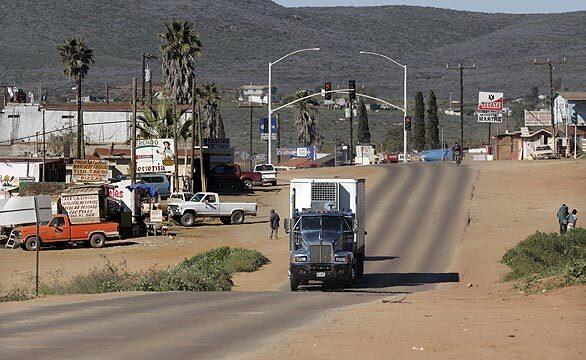
Punta Colonet, a one-light Baja town of 2,500, will need to be reinvented as a modern city with massive upgrades to its roads, housing, water system and power supply if the seaport project goes forward. State and local officials are planning for a city of about 200,000 to spring up around the port. (Don Bartletti / Los Angeles Times)
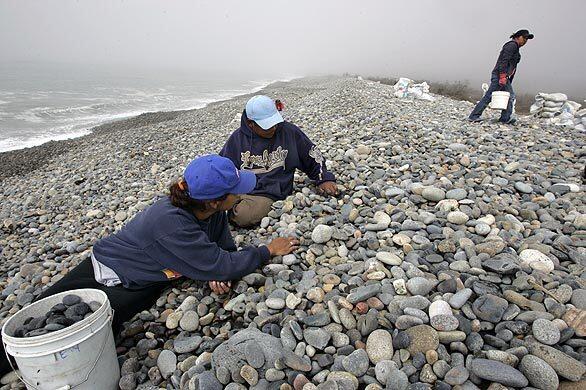
Elizabeth Lopez Beltran, (left), age 18 and relatives gather beach rocks of a certain size and color. The stones are imported by a California businessman for landscaping uses. It’s one of the jobs available in Punta Colonet. Someday the rocky beach may be part of a huge seaport. (Don Bartletti / Los Angeles Times)

Claudia Bertelli, 33, of San Diego, strums her guitar at the Cuatro Casas hostel. She’s vacationing with her surfer husband at the popular point break. Construction of the proposed Punto Colonet seaport would involve dredging the harbor and building protective breakwaters, swallowing up the isolated surfing destination. (Don Bartletti / Los Angeles Times)

A thick fog bank looms offshore from the natural bay at Punto Colonet that government leaders envision as the site of a new, $4-billion seaport that would handle a large chunk of the tens of millions of containers that cross the Pacific each year. One booster says the facility could one day rival the ports of Los Angeles and Long Beach, which last year handled 15.7 million containers combined. (Don Bartletti / Los Angeles Times)







